Homebuilders cut prices, bring on supply; profits plunge back to earth. Medicine this overpriced housing market needs.
By Wolf Richter for WOLF STREET.
New single-family homes for sale at all stages of construction spiked to 511,000 homes in June, the highest since October 2007, when inventory was falling during the Housing Bust as homebuilders, struggling to stay alive, were cutting back construction.
Prices fell, according to Census Bureau data today, and sales fell too but were still in a decent range, unlike sales of existing homes, which plunged.
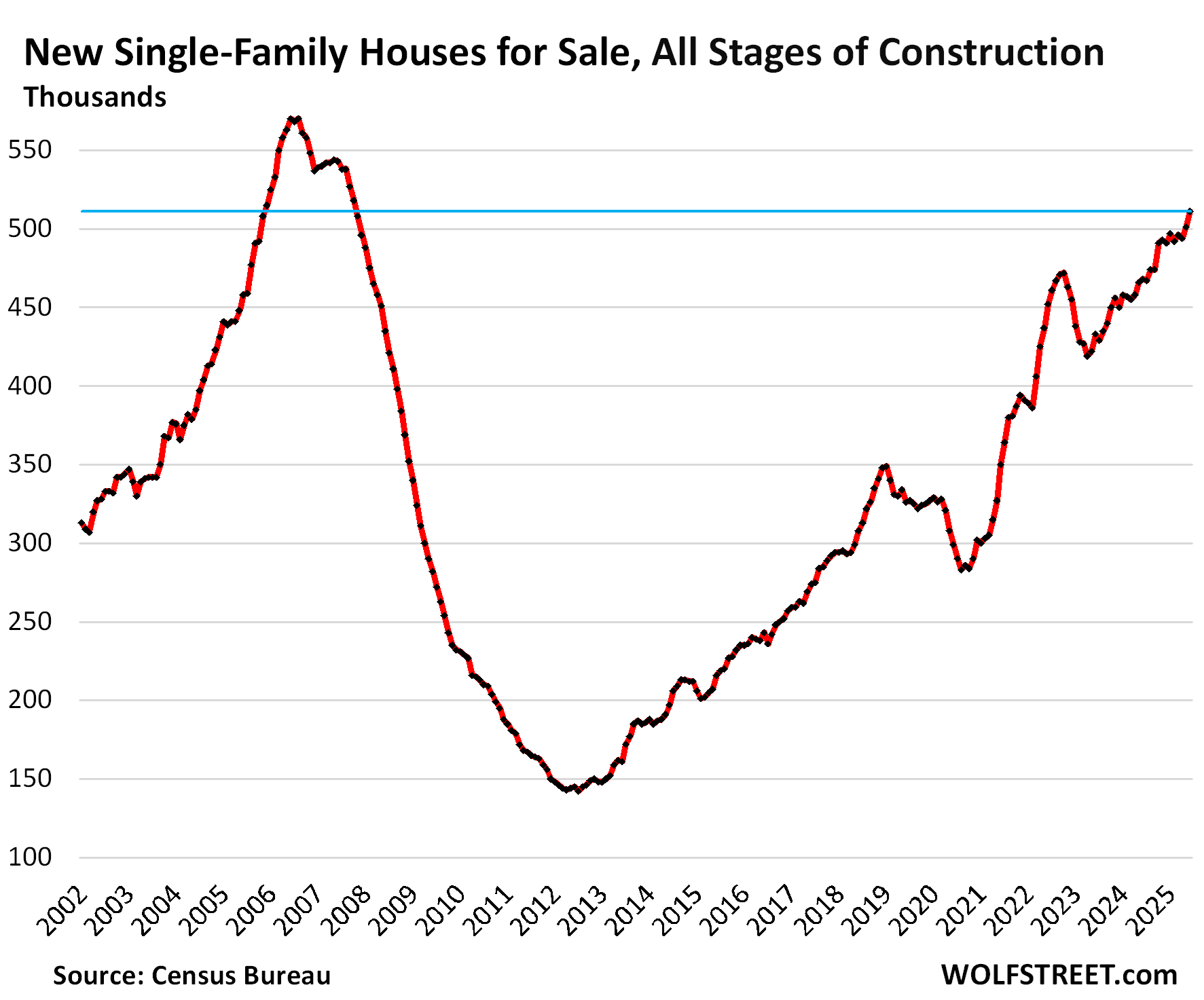
Supply of new homes hit 9.8 months in June at the current rate of sales. A glut of new houses on the market is exactly the medicine this overpriced housing market needs. Bring on the supply!
The fictitious real-estate-hype meme that there is a “Housing Shortage,” bandied about endlessly in the media to pump up prices, needs to be flushed down the toilet, where it belongs, with a double-flush to make sure all of it goes down.
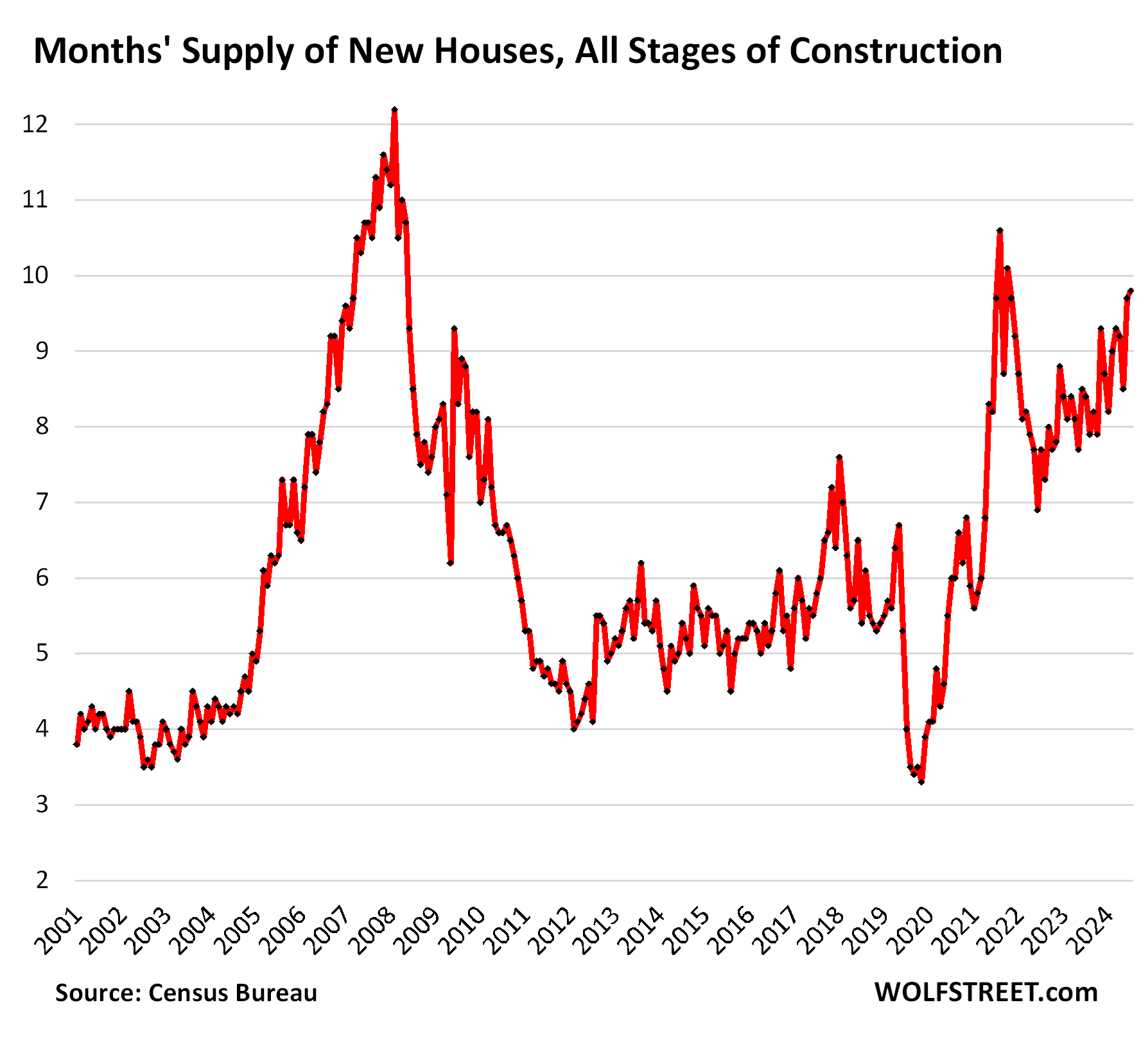
Sales of new homes fell 6.9% year-over-year to 54,000 contracts signed in June, and were down by 1.8% from June 2019.
So compared to existing homes, where sales have plunged because prices are too high, sales of new homes are still in a decent range. Homebuilders cannot decide to not build and not sell while waiting for better days. They have to maintain their businesses, and they have to find the price points at which they can sell, and they sacrifice some of their big-fat profits to get there.
These sales are tracked by signed contracts, not closed sales. A substantial portion of these deals will fall through before closing. For example, D.R. Horton disclosed when it reported earnings two days ago that 4,837 orders were canceled in the quarter, while it booked 23,071 new orders in the quarter.
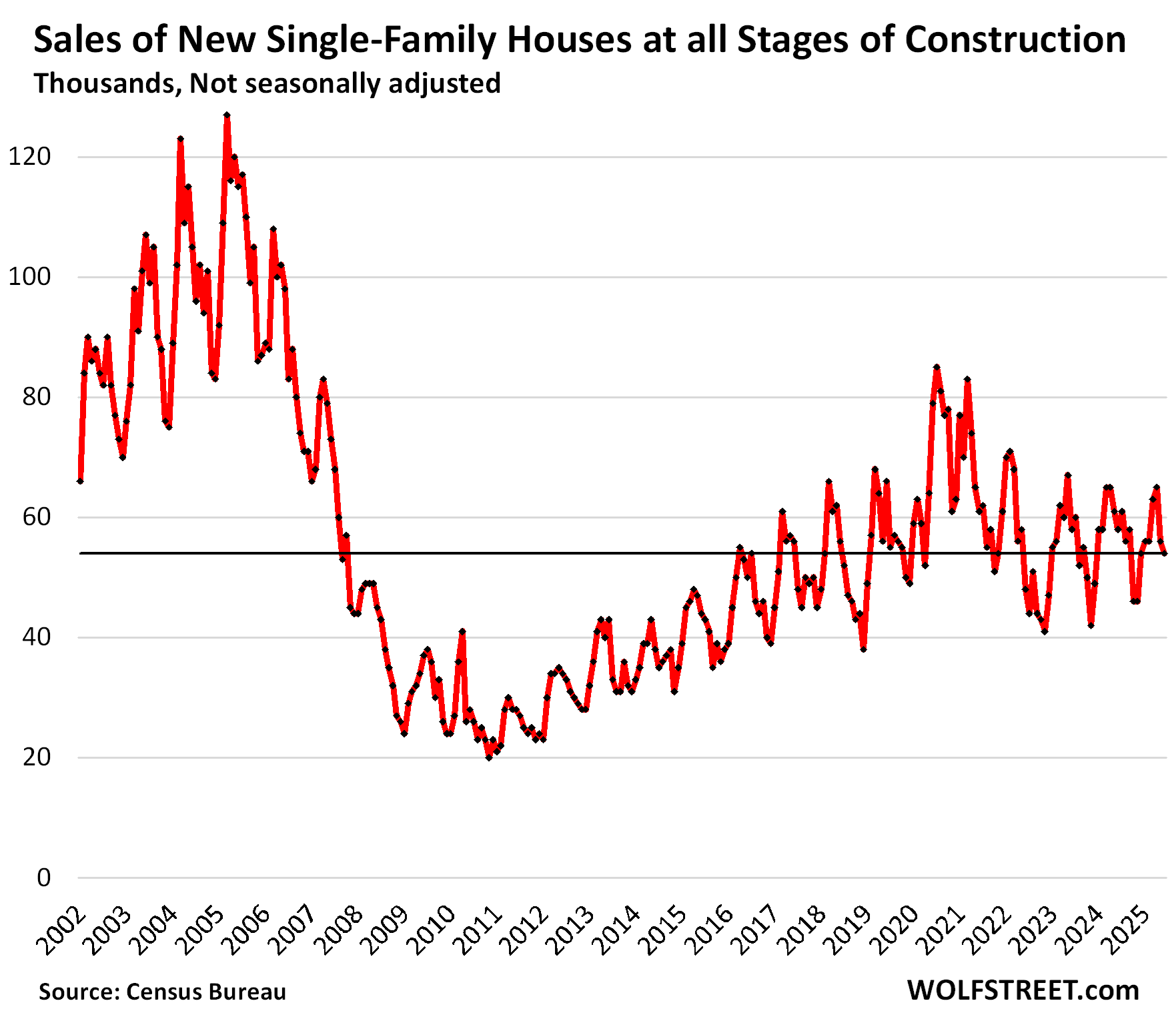
The publicly traded homebuilders have been singing the blues in their earnings reports. And their shares have sunk from their highs last fall: DR Horton [DHI] -27%, Lennar [LEN] -41%, KB Home [KBH] -37%, PulteGroup [PHM] -21%, etc., despite the blistering surge of the overall market over the same period.
In the earnings calls, homebuilders have been talking about stimulating demand with big incentives and costly mortgage rate buydowns; about bringing costs down; about lower sales, lower profit margins, and much lower net profits.
D.R. Horton, the largest homebuilder in the US, reported earnings on July 22 for its fiscal Q3 ended June 30. Net income plunged by 24% year-over-year to $1.02 billion. Compared to Q3 2022, the peak of the price-spike era, net income plunged by 38%.
Order backlog fell 16% year-over-year to 14,075 homes; in dollar terms, the backlog plunged by 19%. Closed sales declined by 7% year-over-year to $8.56 billion.
And the average selling price per home sold declined by 3.3% year-over-year, and by 11.1% from the peak in its fiscal Q3 2022, to $369,600.
But during the home price explosion between its Q3 2020 and Q3 2022, D.R. Horton had jacked up prices on average per home by $121,000 or by 41%. At the time, homebuyers were eager to pay whatever, the Fed’s free money acting like a virus that had turned their brains to mush.
Since that peak, D.R. Horton has reduced the average price per home by $46,200; meaning it gave up 38% of the 2020-2022 price spike. Average selling price includes the incentives:
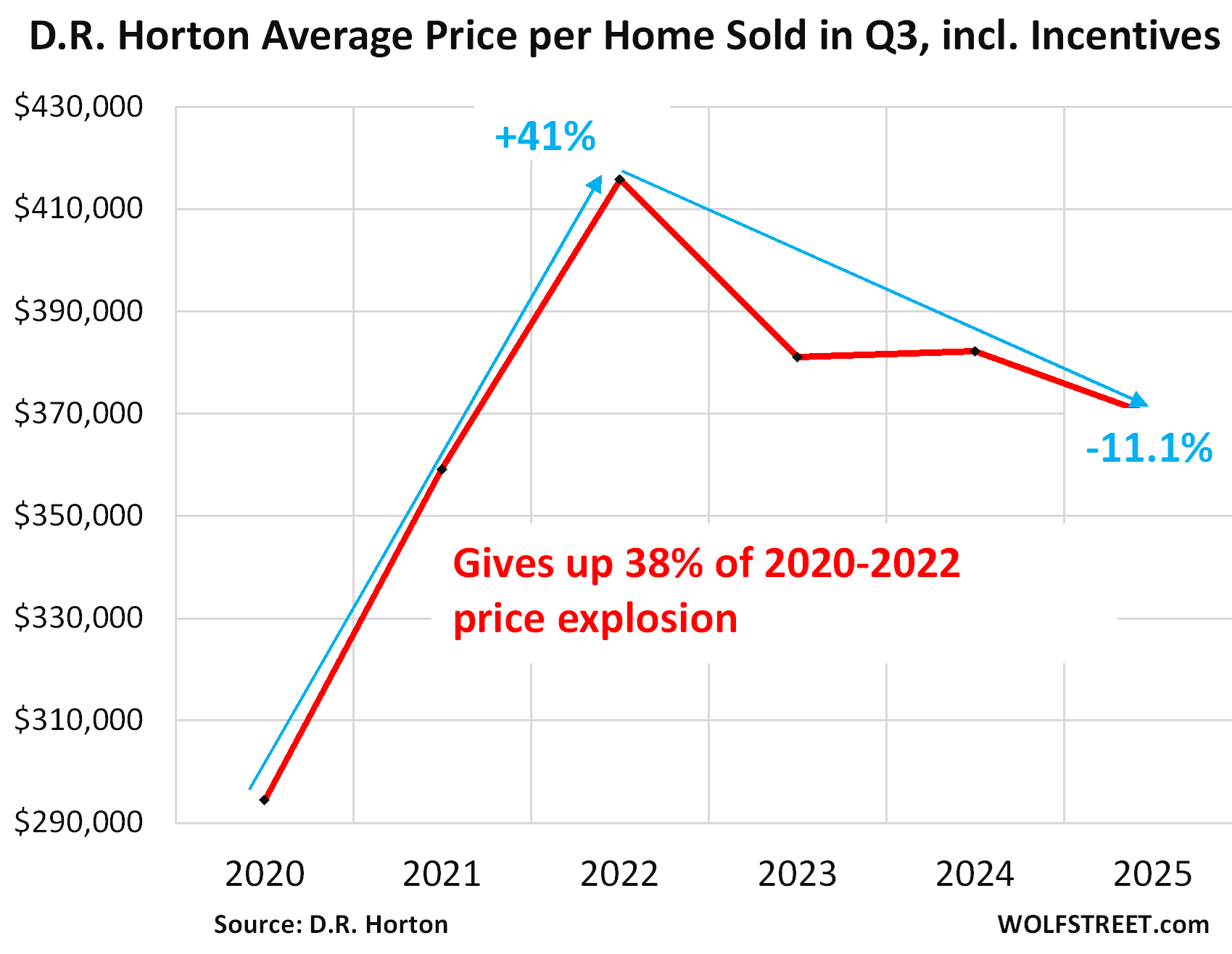
D.R. Horton still made over $1 billion in net income in the quarter, so there’s plenty of room left to give up more of that price spike. And it said as much in the quarterly filing: “We expect to maintain an elevated level of incentives to support demand and may increase them further…”
Lennar, which reported its fiscal Q2 earnings in June, disclosed that its incentive spending jumped to 13.3% of revenues, “primarily” due to mortgage-rate buydowns, the highest incentive spending rate since 2009.
Lennar’s average sales price dropped by 8.7% year-over-year, to $389,000. Compared to the price explosion peak in Q2 2022, it dropped by 19.5%, and is back where it had been in Q2 2020, having given up the entire 2020-2022 price explosion.
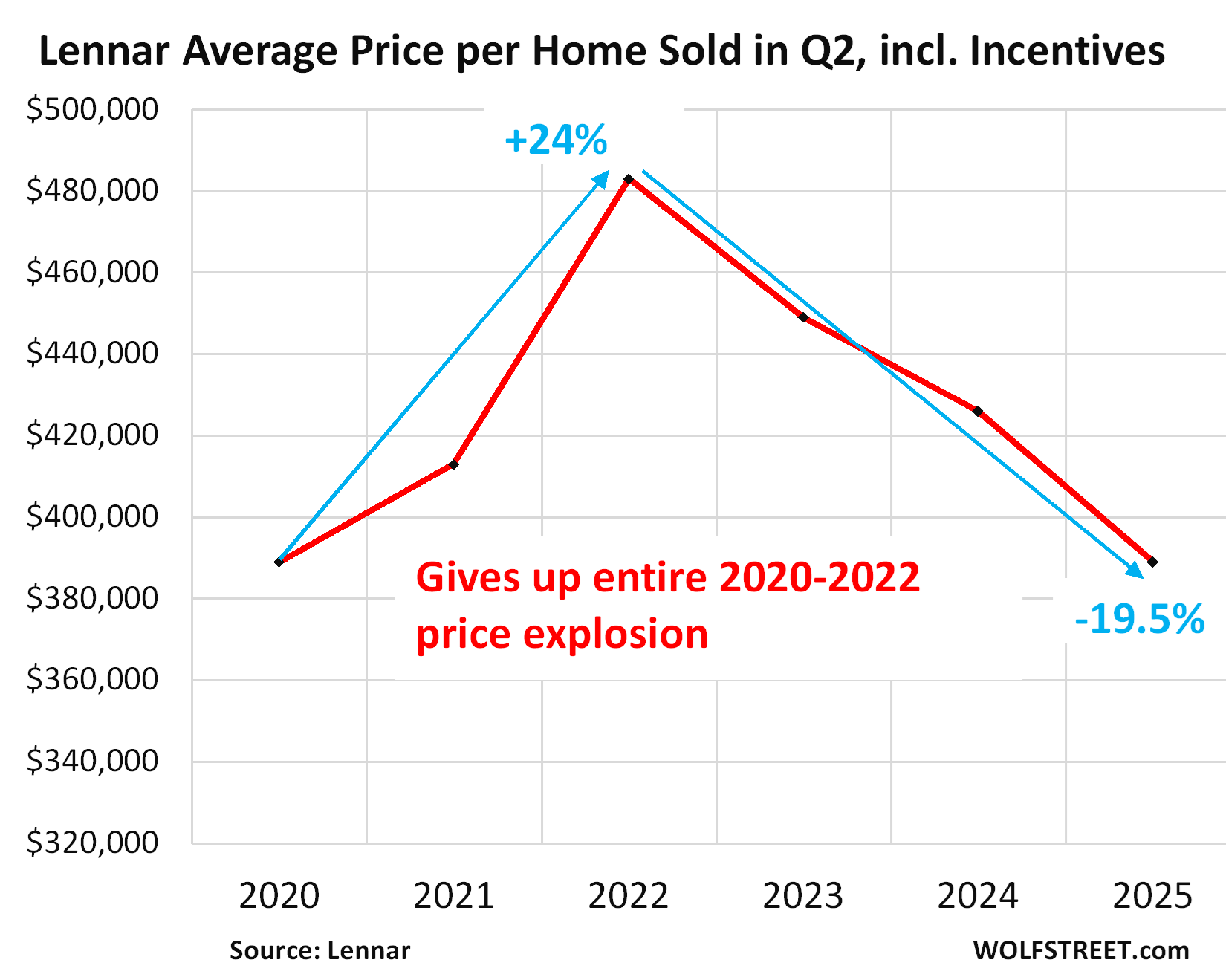
But incentives are not included in the median price.
The median contract price dropped by 2.9% year-over-year to $401,800 in June (blue in the chart below).
The three-month average, which irons out some of the month-to-month squiggles dropped to $412,600 (red), down by only 0.5% year-over-year and by 6.7% from the peak in late 2022.
But the Census Bureau tracks sales prices of new houses by the prices in purchase contracts that buyers signed, which do not include the costs of mortgage-rate buydowns and some other incentives, and thereby overstate the effective sales prices and understate the effective price cuts.
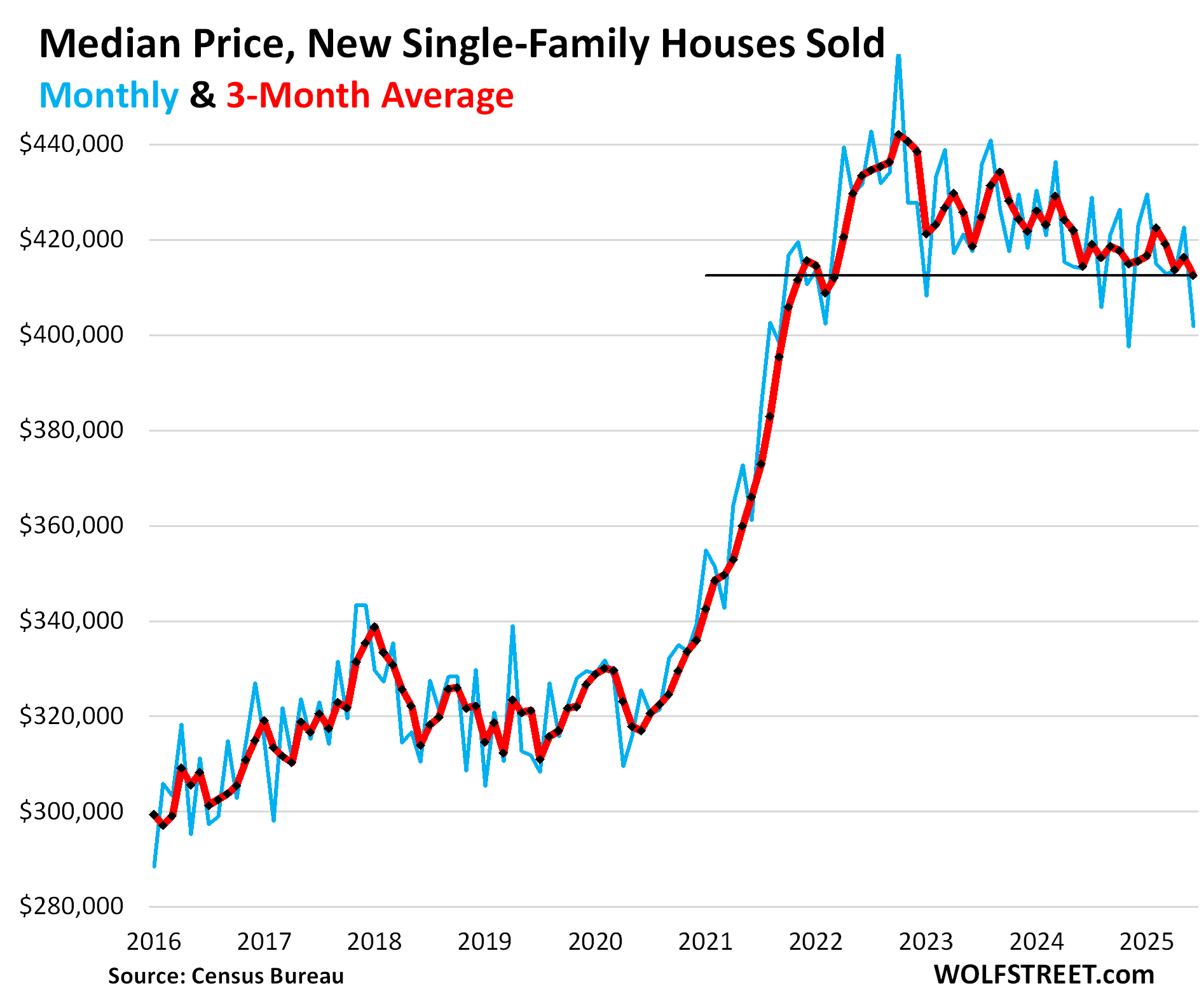
Inventory for sale by region.
In the South, dominated by Texas and Florida, inventories of new houses for sale spiked to a record of 312,000 in June, up by 6.5% from the already above-Housing-Bust-peak level a year ago, and up by 78% from June 2019.
The Census region accounted for 61% of total US new-home inventory, and also for 61% of total US new-home sales (a map of the four Census regions is below the article at the top of the comments).
Sales dropped by 6% year-over-year to 33,000 new homes, and by 15% from June 2019, despite the massive incentives by homebuilders.
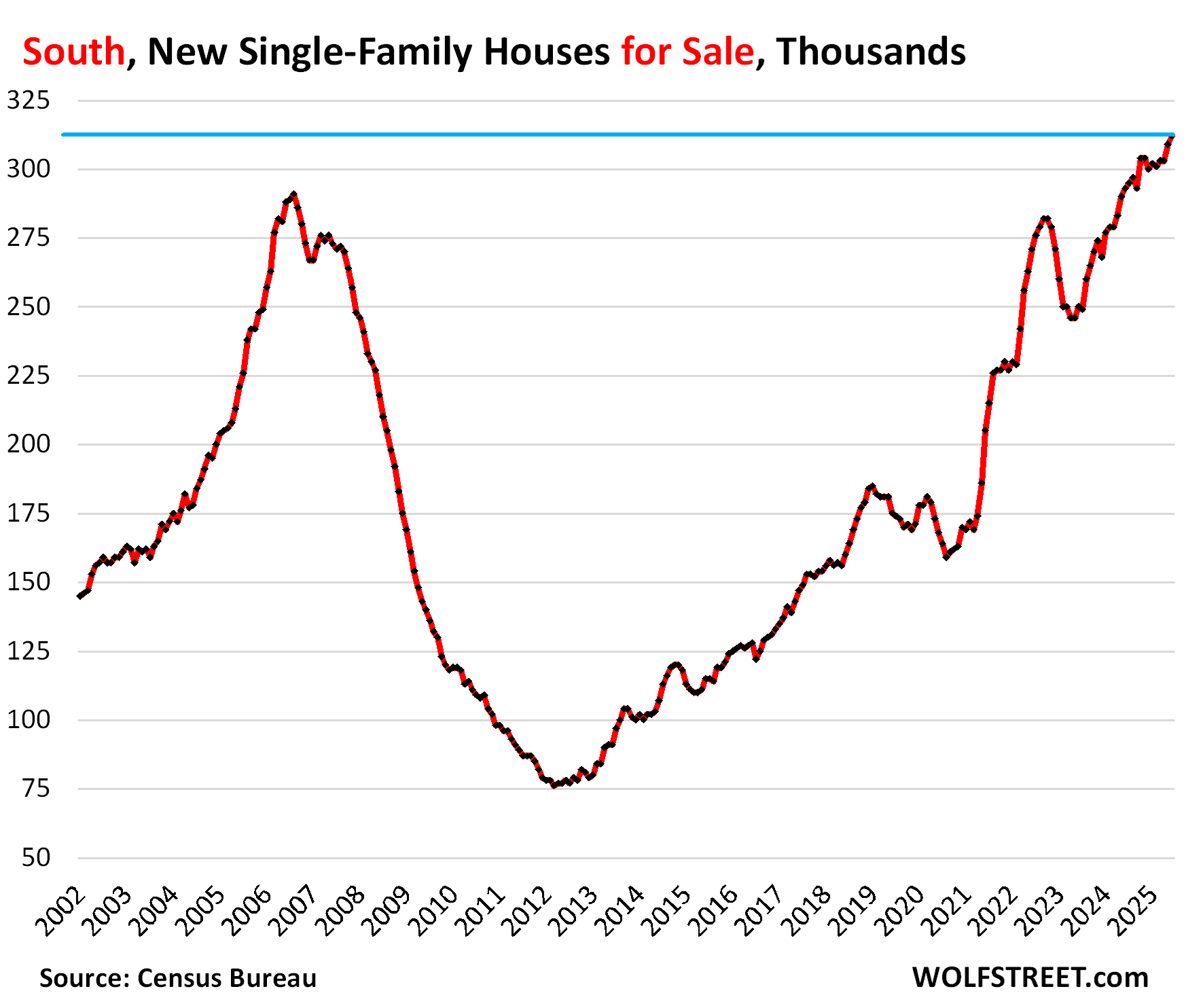
In the West, dominated by California, inventories of new homes for sale jumped by 6.5% year-over-year to 115,000, up by 35% from June 2019.
Sales in the West fell by 14% year-over-year and by 33% from June 2019, to just 12,000 new homes. The West accounted for 23% of the total US inventory and for 22% of total US sales.
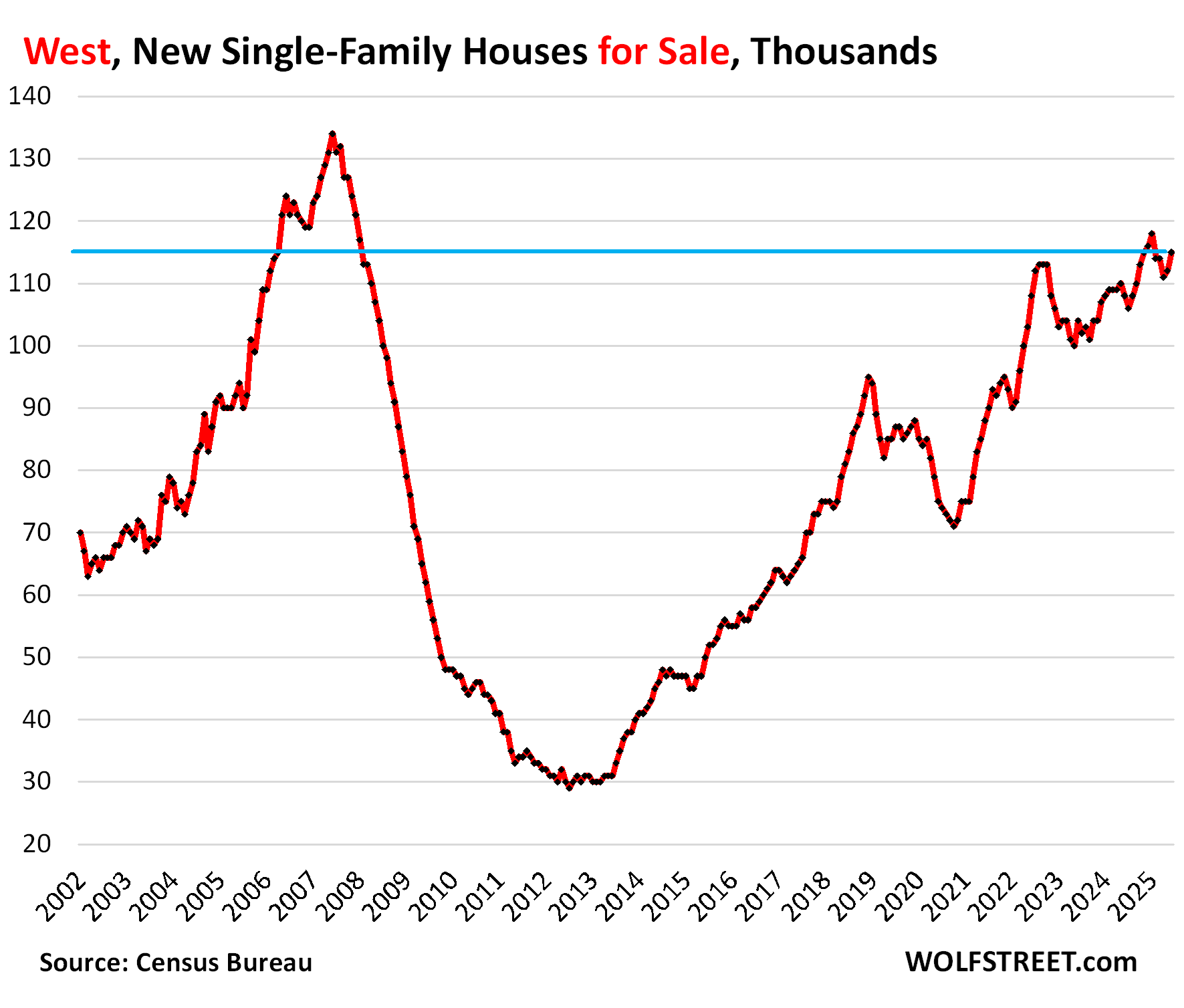
In the Midwest, inventories of new homes for sale spiked by 26.8% year-over-year and by 41% from June 2019 to 52,000 new homes, the highest since February 2009:
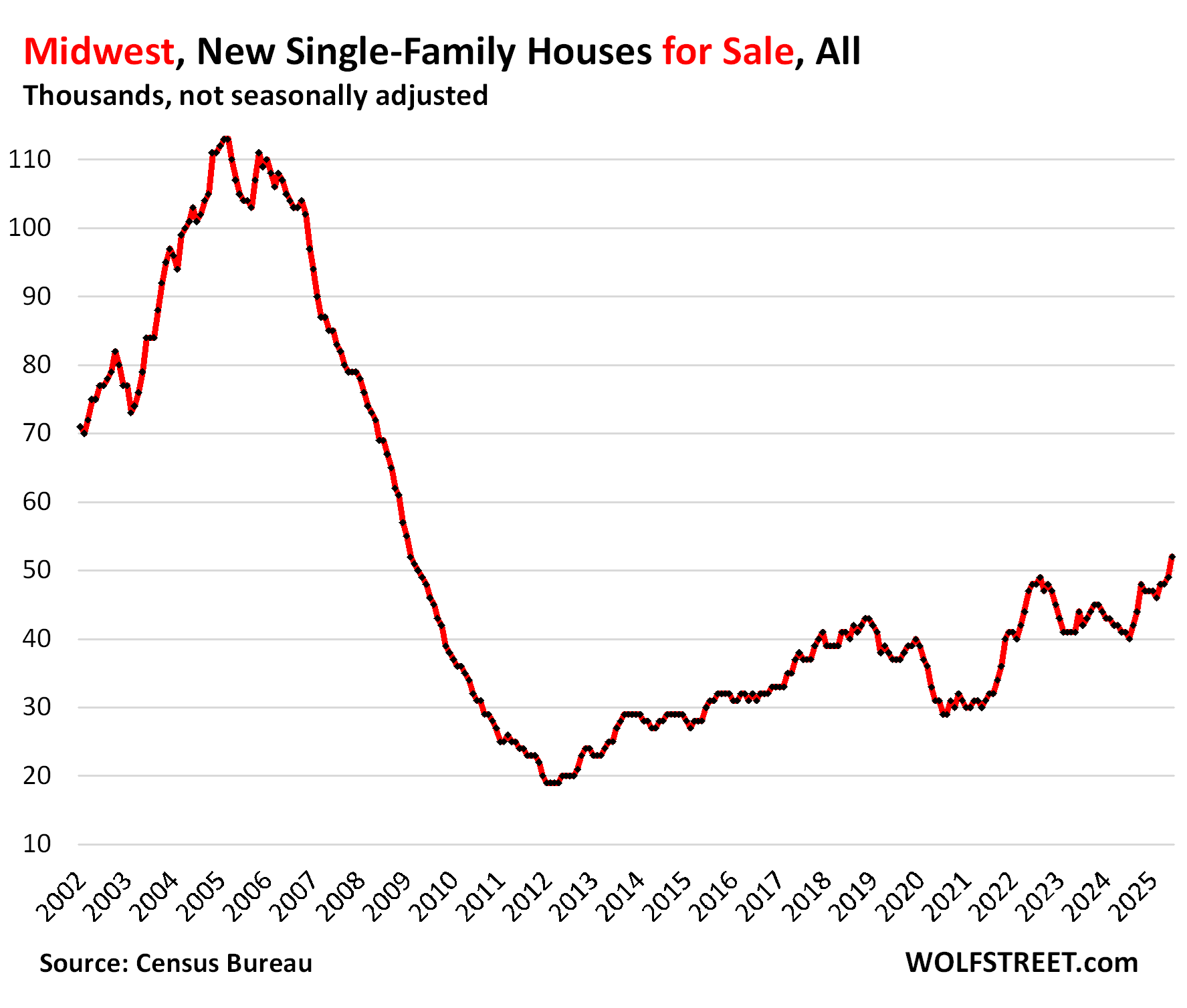
In the Northeast, inventory jumped by 24% year-over-year and by 11% from June 2019, to 31,000 new homes.
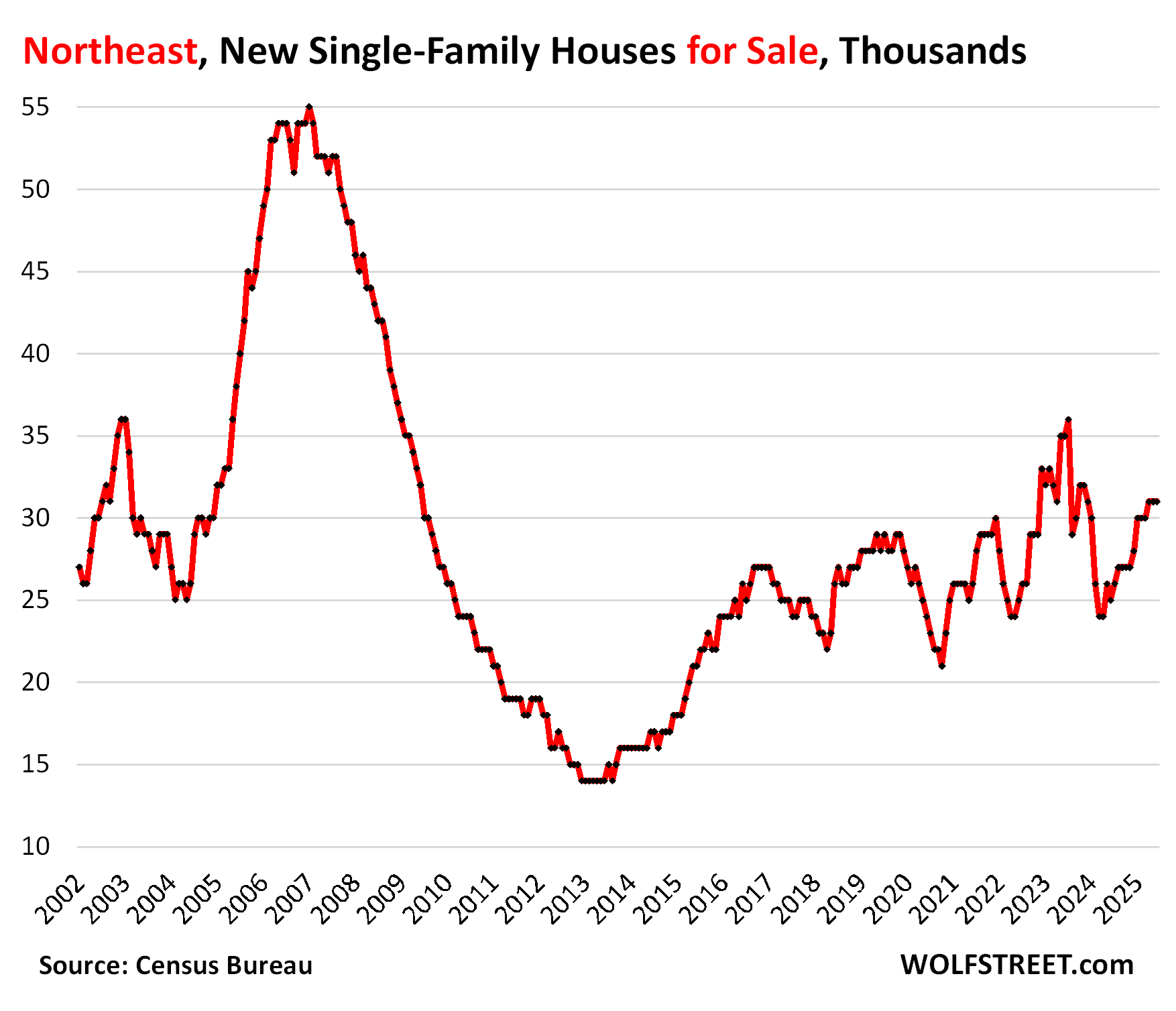
Enjoy reading WOLF STREET and want to support it? You can donate. I appreciate it immensely. Click on the mug to find out how:
![]()
Source link


